Markets
When designing a humanitarian intervention and deciding whether to use CVA, a market analysis should be part of the overall response analysis. Supporting markets to function well has been shown to lead to faster recovery and increased resilience in disaster affected areas.
Many organizations have invested in the development of tools to support market analysis and are considering market-based programming more holistically. This includes interventions that use the market (such as cash transfers to affected populations), as well as interventions that directly support markets (such as conditional grants to traders to get their market back up and running).
Related initiatives
Featured content

Introduction to Market Analysis
Course
This 30 minute online course provides an introduction to the analysis of markets in emergency contexts, with input from some of the world’s leading thinkers on the topic.

A Practical Guide to Market Analysis in Humanitarian response
Course
A three to four hour online course designed to provide future humanitarian market assessment team members with a solid understanding of theory and steps of market assessments so that they can join assessment teams prepared with a basic understanding of what they will be doing and why.
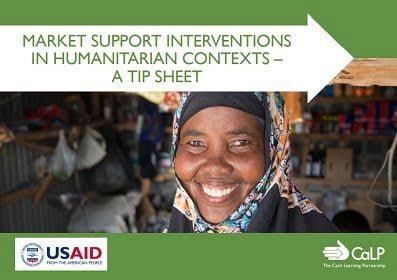
Market Support Interventions in Humanitarian Contexts – a Tip Sheet
Guidelines and Tools
This tip sheet defines what market support programming in humanitarian contexts is, and what it can look like in practice. It enables humanitarian practitioners to systematically consider market support interventions alongside other programme activities. The scope includes support interventions focusing on supply/availability and on demand/access. The tip sheet is based on secondary data...
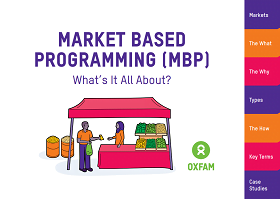
Market Based Programming (MBP)
Guidelines and Tools
Market Based Programming (MBP) in Oxfam’s work means we always consider existing markets – through assessments, analysis and programming – across all phases of a response and across all technical sectors. You can also watch the videos below which are available in English, Spanish, Arabic and French.
Thematic lead
Latest

Standards on Cash and Markets: Time to raise the bar
Blog Post
Humanitarian action is changing fast, and an updated set of shared standards will be crucial in upholding quality among a new generation of responders. The launch of the new Sphere Handbook on November 6th represents the most comprehensive effort to date review the humanitarian standards, to keep...
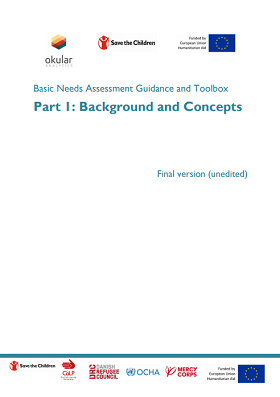
Basic Needs Assessment Guidance and Toolbox Part 1: Background and Concepts
Guidelines and Tools
This document covers humanitarian aid activities implemented with the financial assistance of the European Union. The view expressed herein should not be taken, in any way, to reflect the official opinion of the European Union and the European Commission is not responsible for any use that may be made of...

Kenya Enhanced Market Analysis
Report
Between May and July 2018, the Famine Early Warning Systems Network (FEWS NET) carried out an Enhanced Market Analysis (EMA) in Turkana, Marsabit, Isiolo, Baringo, Samburu, and Kitui counties, Kenya. Following the scope of work, the assessment covered five broad themes: (1) households’ access to food...

New Markets Support Tip Sheet and Webinar
Blog Post
Have you heard about market support programming but don’t quite understand what it is or how to put it into practice? The CALP Network has developed a tip sheet with Catholic Relief Services (CRS) and our Markets Working Group, and will share tips and tricks from the community of practice in a launch...
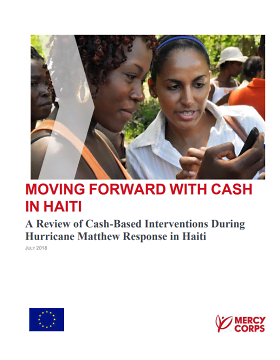
Moving Forward with Cash in Haiti: A Review of Cash-Based Interventions during Hurricane Matthew Response in Haiti
Case Study
Mercy Corps, with funding from European Civil Protection and Humanitarian Aid Operations (ECHO) has conducted an extensive review of lessons learned and contextual data, combined with key informant interviews and workshops to compile, analyse and present core lessons from the Hurricane Matthew cash-based...

Micro-level changes in market recovery and growth: The Ebola CTP experience
Webinar recording
Following our Ebola dissemination event in Dakar, the CALP Network hosted a webinar looking at the micro level effects of cash transfers on local economies during the Ebola crisis. Listen to the recording here.
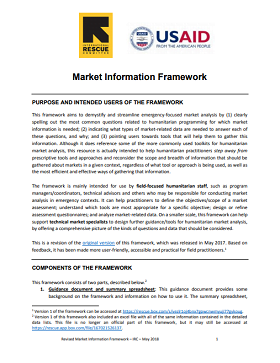
Market Information Framework
Guidelines and Tools
The Market Information Framework aims to clearly spell out the most common questions related to humanitarian programming for which market information is needed and to indicate what types of market-related data are needed to answer each of these questions. It explains why various types of market...

ERC Learning Event: Scaling up our tools and approaches for multi-purpose cash grants
Blog Post
Watch the videos and read the recommendations from the ERC MPG Consortium event in Addis Ababa, Ethiopia.
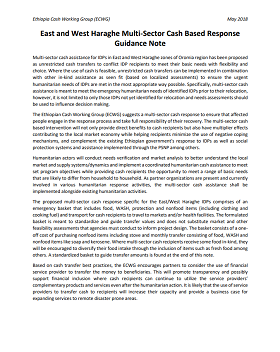
East and West Haraghe Multi-Sector Cash Based Response Guidance Note
Guidelines and Tools
Multi-sector cash assistance for IDPs in East and West Haraghe zones of Oromia region has been proposed as unrestricted cash transfers to conflict IDP recipients to meet their basic needs with flexibility and choice. Where the use of cash is feasible, unrestricted cash transfers can be implemented in...
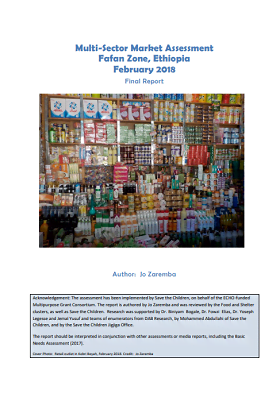
Multi-Sector Market Assessment Fafan Zone, Ethiopia
Report
This report covers the findings of the Multi-Sector Market Assessment (MSMA) conducted in Fafan Zone, Ethiopia in February and March 2018. The assignment formed part of the ERC-MPG Consortium on Approaches to Transformative Humanitarian Cash Transfer programming and is intended to support joint,...

Cash and Markets Working Group Strategic Workshop Report – Libya
Report
On the 6th and 7th of February 2018, a two days meeting opened to the members of the CMWG, Sector Leads, World Bank, UNSMIL, OCHA and Donors was held in Tunis to review the achievements, gaps and challenges of cash programing and articulate the 2018 humanitarian Cash Strategy for Libya. Supported by a...

Review of Food for Peace Market-Based Emergency Food Assistance Programs: Jordan/Turkey Case Study Report
Report
Syria regional crisis: The response to the Syria regional crisis exemplifies the challenges and opportunities involved with delivering food assistance in a widespread, largely urban refugee and internally displaced persons (IDP) crisis affecting middle-income countries. This case study focuses on...

Taking Market Analysis Beyond Theory: Practices that Facilitate the Use of Market Information in Humanitarian Programming
Guidelines and Tools
Although strong examples of emergency programming that considers and responds to local market dynamics are out there, they are relatively few in number, and there is no consolidated review of these programs to inform good practice. Under the Improving the Uptake of Market Analysis project, a...
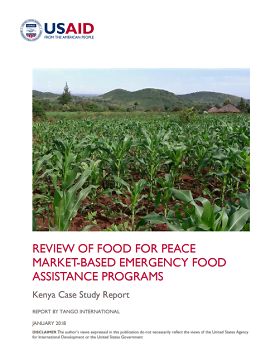
Review of Food for Peace Market-Based Emergency Food Assistance Programs: Kenya Case Study Report
Report
Kenya represents a country focused on building resilience through greater partnerships between USAID-Food for Peace (FFP) programs, other USAID-funded programs and local and national government. DESIGN: FFP MBEP in Kenya is a good example of connecting emergency and development programming and of...

Cost-Effectiveness in Humanitarian Work: Cash-Based Programming
Report
There is consensus in the literature that giving people cash in humanitarian contexts provides greater choice and dignity while at the same time stimulating local markets. In comparison to in-kind approaches, cash emerges as more efficient to deliver and – depending on the particularities of a given...
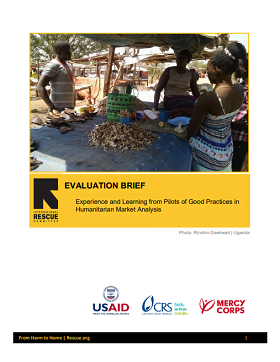
Evaluation Brief: Experience and Learning from Pilots of Good Practices in Humanitarian Market Analysis
Guidelines and Tools
As part of the “Improving the Uptake of Humanitarian Market Analysis” project, the IRC, CRS and Mercy Corps teamed up to pilot practices that were thought to help humanitarian teams better understand and use market information in programming. In Niger and Nigeria, IRC and CRS teams explored how...
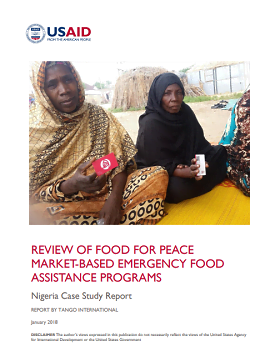
Review of Food for Peace Market-Based Emergency Food Assistance Programs: Nigeria Case Study Report
Case Study
Nigeria is an example of food assistance in a conflict situation in the Sahelian context. The response used information technology to deliver one of the more sophisticated applications of voucher programs. This case is a good example of proactive implementing partner (IP) mechanisms and monitoring systems...

Market Support Interventions in Humanitarian Contexts – a Tip Sheet
Guidelines and Tools
This tip sheet defines what market support programming in humanitarian contexts is, and what it can look like in practice. It enables humanitarian practitioners to systematically consider market support interventions alongside other programme activities. The scope includes support interventions focusing...

Review of Food for Peace Market-Based Emergency Food Assistance Programs: Sierra Leone Case Study Report
Report
Sierra Leone represents a remarkable experiment in market-based emergency programming using unconditional cash transfers and some conditional cash transfers Sierra Leone reflects the challenges of providing food assistance in the wake of a major infectious disease epidemic. Food insecurity increased due...
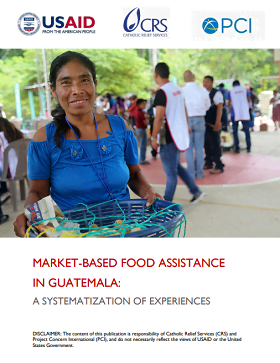
Market-based Food Assistance in Guatemala: A Systematization of Experiences
Guidelines and Tools
In April 2017, at the request of the United States Agency for International Development’s (USAID) Office of Food for Peace (FFP) in Guatemala, Catholic Relief Services (CRS) and Project Concern International (PCI) designed a process to gather and synthesize the experiences of food assistance...
